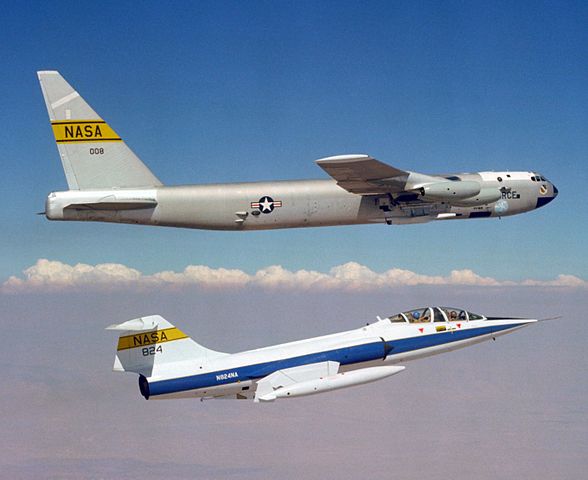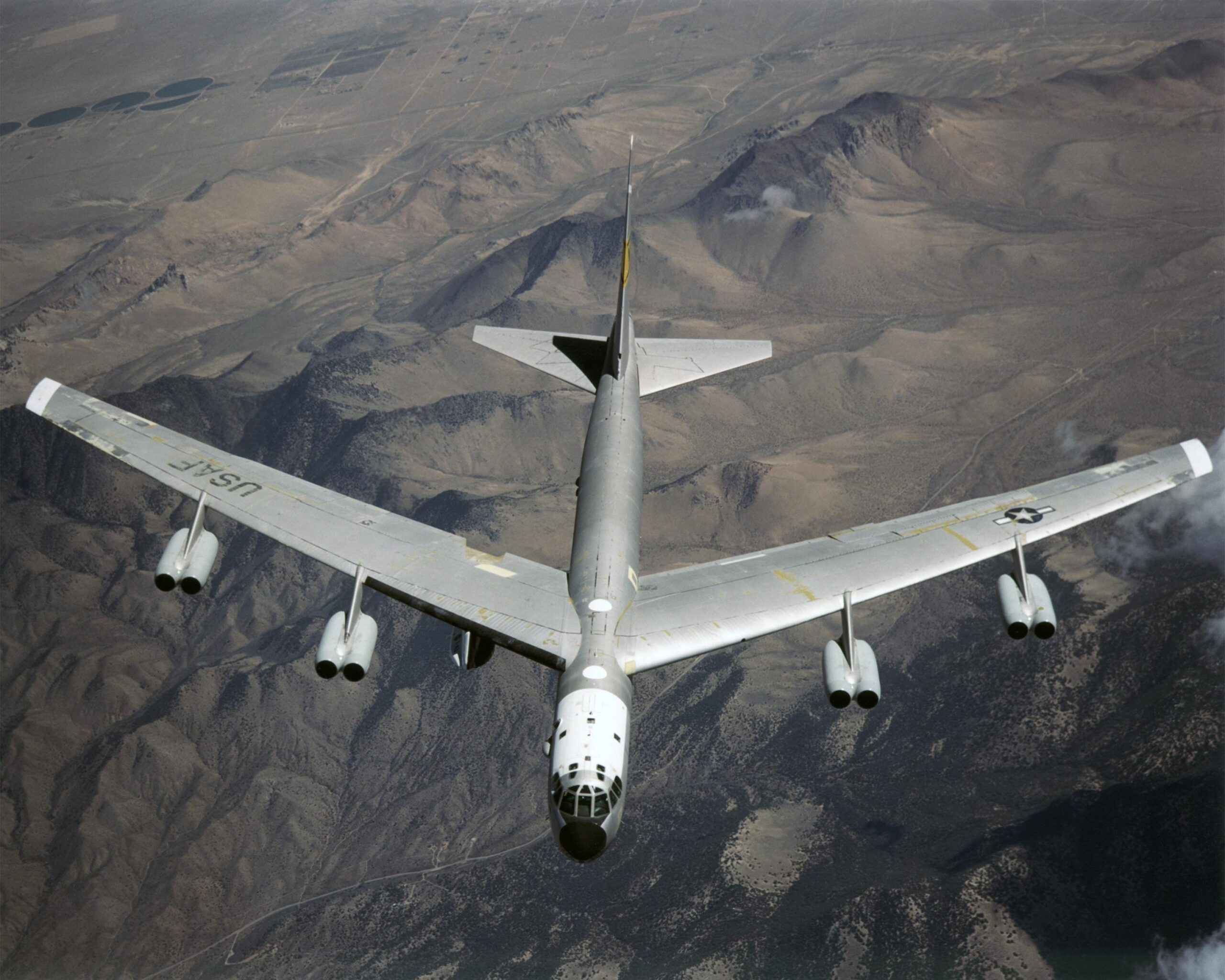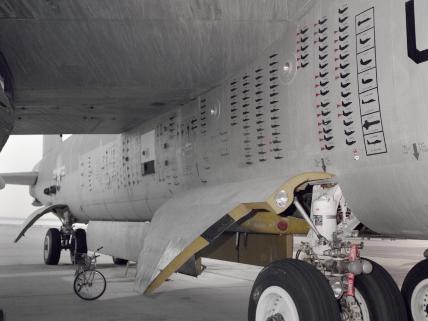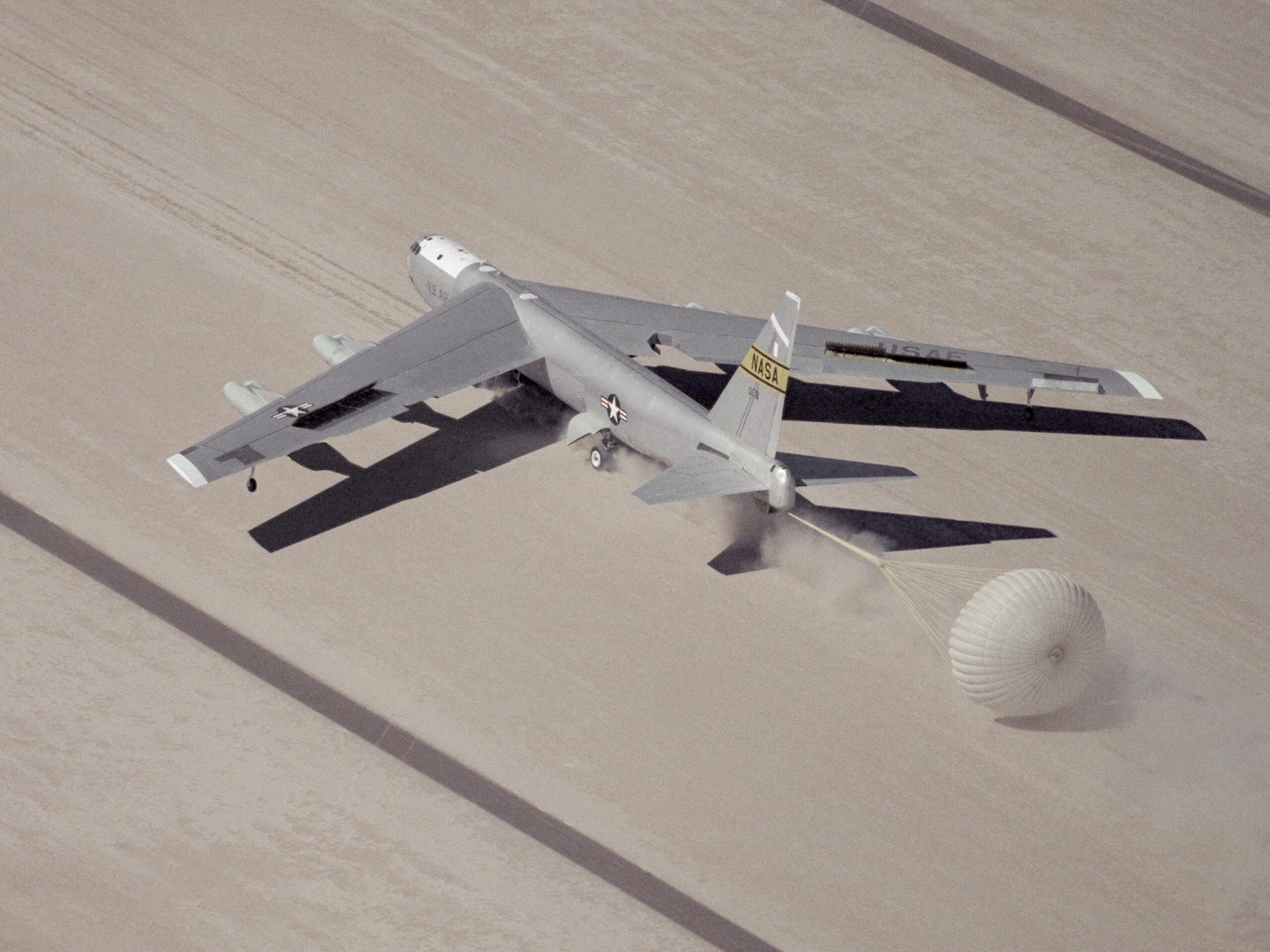
16 September 1999: 44 years, 3 months and 6 days after its very first flight, NASA’s airborne launch aircraft, or “mothership,” Balls 8, completed its 1,000th flight.
Balls 8, so-called because of the double zeros in it U.S. Air Force serial number, 52-008, is a Boeing NB-52, modified as a drop ship from its original configuration as an RB-52B-10-BO Stratofortress reconnaissance bomber assigned to the Strategic Air Command. It made its first flight 11 June 1955 and was reassigned from SAC to Edwards Air Force Base to support NASA flight testing operations, 8 June 1959. Balls 8 served NASA until 17 December 2004, when it was replaced by a newer NB-52H Stratofortress.
52-008 was altered at the North American Aviation facility at Air Force Plant 42, Palmdale, California. A pylon was mounted under the bomber’s right wing. A large notch was cut into the trailing edge of the inboard flap for the X-15’s vertical fin. A 1,500 gallon (5,678 liter) liquid oxygen tank was installed in the bomb bay. A station for a launch operator was installed on the upper deck of the B-52 at the former electronic countermeasures position. A series of control panels allowed the panel operator to monitor the X-15’s systems, provide electrical power, and to keep the rocketplane’s liquid oxygen tank full as the LOX boiled off during the climb to launch altitude. The operator could see the X-15 through a plexiglas dome, and there were two television monitors.
The NB-52B was used during the X-15 Program and carried the three hypersonic research aircraft aloft on 159 of their 199 flights. (NB-52A 52-003, The High and Mighty One, made the other 40 launches.) It has also been used to carry the X-24 and HiMat lifting body research aircraft and to launch Pegasus research rockets.
At the time of its retirement, Balls 8 was the oldest B-52 in service, and also the lowest time B-52. It is on display near the north gate at Edwards Air Force Base.

Of the 744 B-52 Stratofortresses built by Boeing, 50 were B-52Bs and 27 of these were RB-52B reconnaissance bombers.
The airplane was 156 feet, 6.9 inches (47.724 meters) long with a wingspan of 185 feet, 0 inches (56.388 meters) and overall height of 48 feet, 3.6 inches (14.722 meters). The wings were mounted high on the fuselage (“shoulder-mounted”) to provide clearance for the engines which were suspended on pylons. The wings’ leading edges were swept 35°. The bomber’s empty weight was 164,081 pounds (74,226 kilograms), with a combat weight of 272,000 pounds (123,377 kilograms) and a maximum takeoff weight of 420,000 pounds (190,509 kilograms).
Early production B-52Bs were powered by eight Pratt & Whitney J57-P-1W turbojet engines, while later aircraft were equipped with J57-P-19W and J57-P-29W or WA turbojets. The engines were grouped in two-engine pods on four under-wing pylons. The J57 was a two-spool, axial-flow engine with a 16-stage compressor section (9 low- and 7-high-pressure stages) and a 3-stage turbine section (1 high- and 2 low-pressure stages). These engines were rated at 10,500 pounds of thrust (46.71 kilonewtons), each, or 12,100 pounds (53.82 kilonewtons) with water injection.
The B-52B/RB-52B had a cruise speed of 523 miles per hour (842 kilometers per hour). The maximum speed varied with altitude: 630 miles per hour (1,014 kilometers per hour) at 19,800 feet (6,035 meters), 598 miles per hour (962 kilometers per hour) at 35,000 feet (10,668 meters) and 571 miles per hour (919 kilometers per hour) at 45,750 feet (13,945 meters). The service ceiling at combat weight was 47,300 feet (14,417 meters).
Maximum ferry range was 7,343 miles (11,817 kilometers). With a 10,000 pound (4,536 kilogram) bomb load, the B-52B had a combat radius of 3,590 miles (5,778 kilometers). With inflight refueling, the range was essentially world-wide.

Defensive armament consisted of four Browning Aircraft Machine Guns, Caliber .50, AN-M3, mounted in a tail turret with 600 rounds of ammunition per gun. These guns had a combined rate of fire in excess of 4,000 rounds per minute. (Eighteen RB-52Bs were equipped with two M24A1 20 mm autocannon in the tail turret in place of the standard four .50-caliber machine guns.)
The B-52B’s maximum bomb load was 43,000 pounds (19,505 kilograms). It could carry a 15-megaton Mark 17 thermonuclear bomb, or two Mark 15s, each with a maximum yield of 3.8 megatons.

© 2017, Bryan R. Swopes